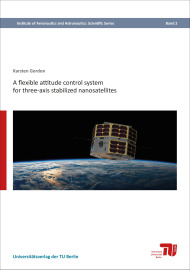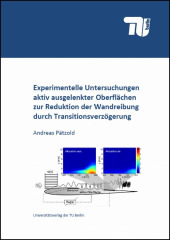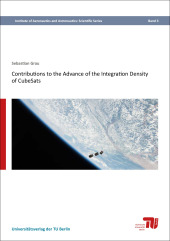A flexible attitude control system for three-axis stabilized nanosatellites

Format: 14,8 x 21,0 cm
Publishing year: 2018
This thesis investigates a new concept for the flexible design and verification of an ADCS for a nanosatellite platform. In order to investigate guidelines for the design of a flexible ADCS, observations of the satellite market and missions are recorded. Following these observations, the author formulates design criteria which serve as a reference for the conceptual design of the flexible ADCS. The research of the thesis was carried out during the development of TU Berlin”s nanosatellite platform TUBiX20 and its first two missions, TechnoSat and TUBIN. TUBiX20 targets modularity, reuse and dependability as main design goals. Based on the analysis of design criteria for a flexible ADCS, these key design considerations for the TUBiX20 platform were continued for the investigations carried out in this thesis. The resulting concept implements the ADCS as a distributed system of devices complemented by a hardware-independent core application for state determination and control. Drawing on the technique of component-based software engineering, the system is partitioned into self-contained modules which implement unified interfaces. These interfaces specify the state quantity of an input or output but also its unit and coordinate system, complemented by a mathematical symbol for unambiguous documentation. The design and verification process for the TUBiX20 ADCS was also elaborated during the course of this research. The approach targets the gradual development of the subsystem from a purely virtual satellite within a closed-loop simulation to the verification of the fully integrated system on an air-bearing testbed. Finally, the concurrent realization of the investigated concept within the TechnoSat and TUBIN missions is discussed. Starting with the individual ADCS requirements, the scalability of the approach is demonstrated in three stages: from a coarse, but cost- and energy-efficient configuration to realize a technology demonstration mission with moderate requirements (TechnoSat) to a high-performance configuration to support Earth observation missions (TUBIN).



